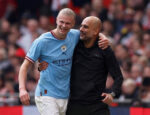The main principle behind “Juego de Posición” is to always look for superiority on the football pitch. This superiority can be achieved by being position-ally, numerically or qualitatively superior. This “Juego de Posición” or otherwise called Positional play has been the underlying philosophy behind one of modern football’s most successful coaches, Pep Guardiola.
Implementing this style of play is a highly arduous task and requires all the players involved to be able to adapt to the system. The Barcelona team under Pep Guardiola was one of the few examples in world football when all the 11 players understood and executed their roles consistently.
“The principle idea of Positional Play is that players pass the ball to each other in close spaces to be able to pass to a wide open man.”
– Juan Manuel Lillo
Juego de Posición is a model of play which is built on the training ground. It is planned and practiced out on the training pitch with hours of effort put in by all the players so that they clearly understand the various possibilities which occur in real time and execute their response to them without fail. These responses to various events on the pitch are designed to achieve superiority and control. This superiority will in-turn allow the attacking team to penetrate the opposition defence either because of a free man or because simply because your striker is Messi and he is only marked by a single defender.
Because Juego de Posición demands superiority in every phase of the game, you realise why the goalkeeper is such an important player in a Pep’s team. You always want to maintain numerical superiority, especially at the back. If two opponents are pressing your center-backs, your goalkeeper will become an active player, make it 3v2 and maintain numerical superiority.
“The objective is to move the opponent, not the ball.”
– Pep Guardiola
Players are trained to make certain runs, overlaps and occupy a certain space on the pitch in reaction to where the ball is at the moment and what the situation is. At Barcelona, Dani Alves was a key player who enabled the success of this system. The center of the pitch was usually overloaded and crowded, but it was Alves’ runs on the right which provided a release outlet if the midfielders were under intense pressure. Also, long pass which was used as an outlet was generally combined with a layoff to another player who arrives at the opportune moment. This player has a better view of the field, has the ball in control and deals with a defence which is even more confused.
So basically, in Juego de Posición, the pitch is divided in to separate zones and all the players have specific duties to carry out within these zones depending on the nature of the play. Players make runs, create overlaps to maintain superiority over the opposition. The ball is circulated between various players combined with the non ball players providing various passing options and creating problems for the opposition with their runs. The main criticism of this system is that it is too rigid and that it is not reactive. There are infinite variables at play on a football pitch and there is no system in the world which can address all of them. So you need the right players who have been coached together for some time and some sprinkling of magic to perfect this system. Pep at Barcelona might be one of the rarest teams where everything was perfect but even Pep’s biggest fans will admit that he needed possibly the greatest footballer ever to make it work.
This article attempts to explain Juego de Posición or positional play in a simple manner for the average football fan but it is a very complex subject, so if anyone is interested to learn more, please read this article.








Recent Comments